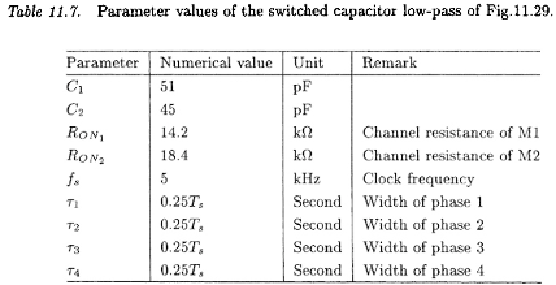Environmental Engineering Reference
In-Depth Information
calculated using the method presented in this section and the results
are plotted in Fig.11.30, together with the measurement data extracted
from [109]. It is seen that the output noise power increases with the
increase in the number of sidebands folded over. It eventually converges
to a finite power irrespective of any further increase in the number of
sidebands. This observation reveals the existence of a finite equivalent
noise bandwidth of this circuit. The finite noise bandwidth of the circuit
is due to the low-pass mechanism formed by the channel resistance of
the MOSFET switches and the shunt capacitances. It is the finite noise
bandwidth of the circuit that results in a finite output noise power. It is
also seen that simulation results agree very well with the measurements.
The second example investigated is a switched capacitor integrator
with four non-overlapping phases of equal width [57]. The schematic
of the integrator and its noise equivalent circuit are shown in Fig.11.31
with the value of its elements given in Table 11.8. The thermal and shot
noise of the operational amplifier are represented by an equivalent noise-
voltage generator The flicker noise of the operational
amplifier and that of the MOSFET switches were not considered in the
analysis. The model of the noise-free operational amplifier is the same
as that given in Chapter 10. The output noise power was calculated
with input noise band width of 250 kHz, 500 kHz, 1 MHz, 5 MHz,


Search WWH ::

Custom Search